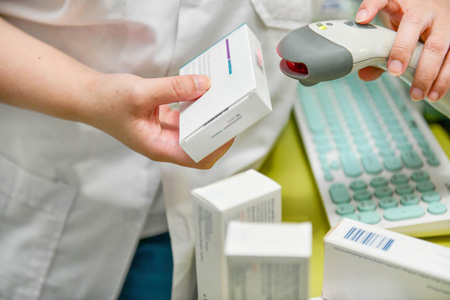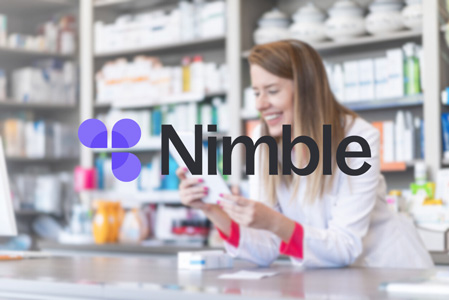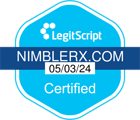


Ways to Save Money on Your GLP-1 Medication
GLP-1s, also commonly referred to by their various brand names or “semaglutides”, are medications designed to help mimic glucagon-like peptide-1. This is a hormone that’s made by your small intestine. This hormone plays a rather large role in how your body functions and regulates blood sugar.
Since being cleared by the FDA, doctors often prescribe these medications to patients looking for a tool to help manage type 2 diabetes and weight loss — and GLP-1s have become a game changer for many patients. And yet, the many benefits to GLP-1s aside, patients can still struggle with adherence. A huge driver of patients not refilling their prescriptions is due to the high cost of these medications.
Luckily, there are a few key ways you can save on GLP-1 medications so refills become more financially reasonable. In this article, we’ll dive into the tactics for saving money on your GLP-1 medication.
General Health Insurance Coverage
One of the best ways to lower (or completely zero out) your bill for GLP-1 refills is by checking to see if your insurance plan covers your prescribed GLP-1 medication. Many different GLP-1s have been approved by the FDA for the treatment of type 2 diabetes, but not always for weight loss, so it’s important to ensure the medication you’re trying to get covered was officially approved for your condition or needs.
The best thing you can do when starting on a GLP-1 is to not assume coverage — that may land you with a large expense you were not expecting to pay. Many insurance plans will cover a portion of the bill for GLP-1s but with certain restrictions such as:
- Restrictions by Brand: Only certain GLP-1 medications or formulations may be covered by your insurance.
- Restrictions by Authorization: Some insurance plans require that you get prior authorization from your provider, complete step therapy for weight loss, or meet other criteria before GLP-1 medications are cleared to be covered.
- Restrictions by Plan: Though many health insurance plans cover these medications, some do not. For example, government-sponsored plans like Medicare will not cover certain GLP-1 medications when used for weight loss only, because it is considered prohibited under the Medicare Prescription Drug, Improvement, and Modernization Act.
If your health insurance plan does not cover GLP-1s for your condition, or they do not cover your medication of choice, it’s always an option to pursue coverage by exception or to submit an appeal. If you’re interested in taking this route, consult with your provider for specific advice.
Coupons and Savings Cards for GLP-1s
Manufacturers of GLP-1s will often offer coupons that can help lessen the financial burden of these medications. You’ll likely have to meet certain criteria to use these coupons or cards, but they can help dramatically reduce the out-of-pocket cost of your medication. It’s important to note the difference between these two cost-saving options:
- Savings or Discount Cards: These are plans or cards issued typically by a 3rd-party or manufacturer that can amplify the savings you get on top of what your insurance plan may cover. The price you pay at your pharmacist may be lowered when you present a savings or discount card at each checkout. Unlike coupons, these typically do not have expiration dates or refill limits, but the price you pay can fluctuate depending on the billed price and how the discount amount or percentage applies against it.
- Medication Coupons: Coupons are often issued directly by manufacturers to lower costs on first-fills of prescriptions or limited refills. Unlike savings cards, these can expire or can be limited to a certain number of fills and are usually credits for fixed amounts off of your total.
Trial Supplies
While taking advantage of free samples or trial GLP-1 medications isn’t a long-term solution, it can be a smart way to see if these medications are right for you without breaking the bank. Talk with your healthcare provider to see if they can offer you trial supplies of your prescribed GLP-1 medication for your first doses.
If they don’t have any sample or trial medications on hand, certain GLP-1 manufacturers do have request forms for physicians to apply to receive trial supplies — but only the professional who prescribed these can use those kinds of forms.
GLP-1 medications are an investment in your overall health and well-being. With any investment, there’s often a cost. Luckily, these tips can possibly help you save money on GLP-1 refills so that your therapy can become a financial reality. If you’re concerned about the cost of your GLP-1 treatment, be sure to reach out to your healthcare provider or pharmacist for detailed, specific advice on what will work for you and your unique budget.
The information on this site is for informational purposes only and should not replace direct medical advice, diagnosis, or treatment from your doctor or another qualified healthcare provider.
Sources:
“GLP-1 Agonists.” The Cleveland Clinic.
“FDA approves first oral GLP-1 treatment for type 2 diabetes.” U.S. Food and Drug Administration.
“Medicare Coverage of GLP-1 Drugs.” Congressional Research Service.
“Appealing a health plan decision.” U.S. Centers for Medicare & Medicaid Services.
“A Pharmacist’s Primer on Prescription Discount Cards.” Jobson Medical Information LLC.


.jpg)
.jpg)
.jpg)


















.jpg)





















.jpg)

















.jpg)


























.jpg)
.jpg)
.jpg)









